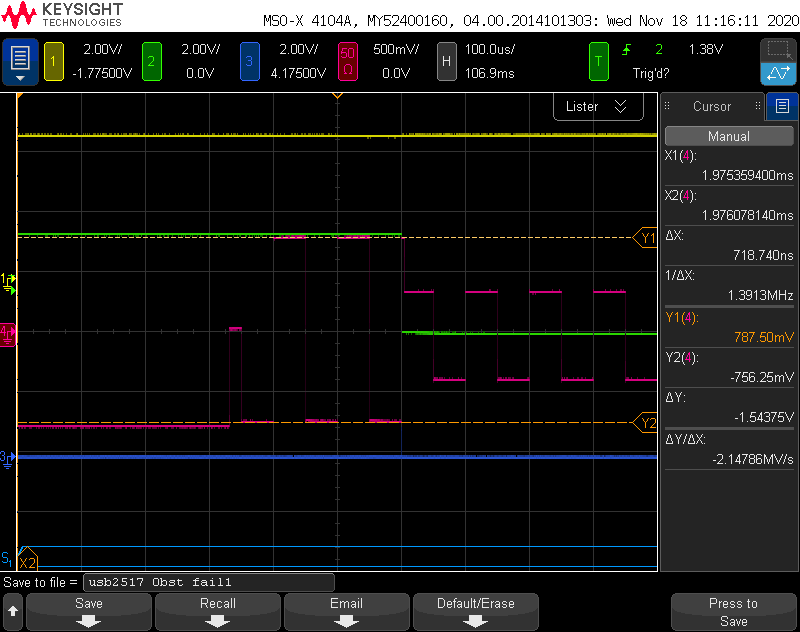Hello Malik,
We completed our new PCA design using a USB 2.0 Hub IC and TUSB216 devices on both upstream and downstream USB signals.
The system setup is shown below.
Each TUSB drives 4m of cable and several lossy connector mates before terminating to Hubs on PCB A and PCB D. The Host PC is connected to PCB A.
At Boost of 0, both TUSB216 devices appear to be working as expected.
At Boost of 3, the TUSB216 device on the downstream side of PCB E will at times enter into shutdown when I power up the system. This occurs maybe 1 out of 5 times I power up. I can verify the shutdown state by probing the CD and ENA_HS pins. Both are at 0V when the device appears in shutdown. I've confirmed that the signal boosting is less than boost level 0 when in this state.
I've looked at the VCC and RSTN signals and these are following the timing suggested on power up. Tramp is 0.28-0.3mS and Tstable is 5.6-5.8mS for both devices.
Both TUSB216 devices are powered by VBUS. Is there a reason the downstream device would intermittently enter shutdown mode but the upstream device would not?
Both TUSB216 devices are configured like the following schematic. The only change to the schematic is when I power off the system, remove R19, and power on the system when I am testing Boost3 level. Note that TUSB_VCC is tied directly to VBUS through a zero ohm.
Can you help me figure out why I am entering shutdown mode?
Thank you,
Ethan Rhodes

























